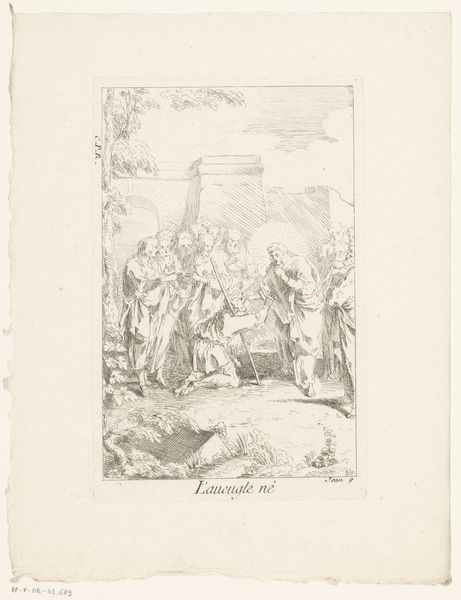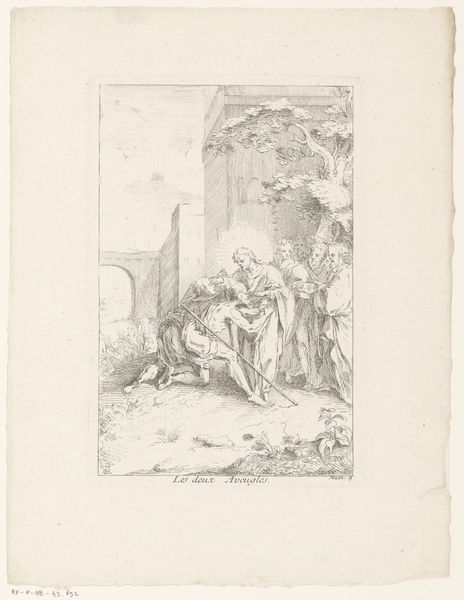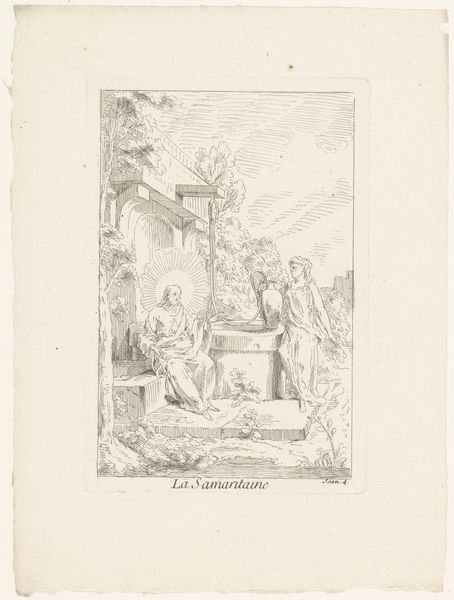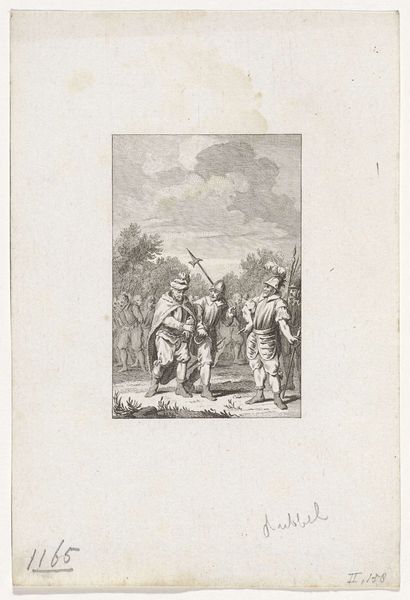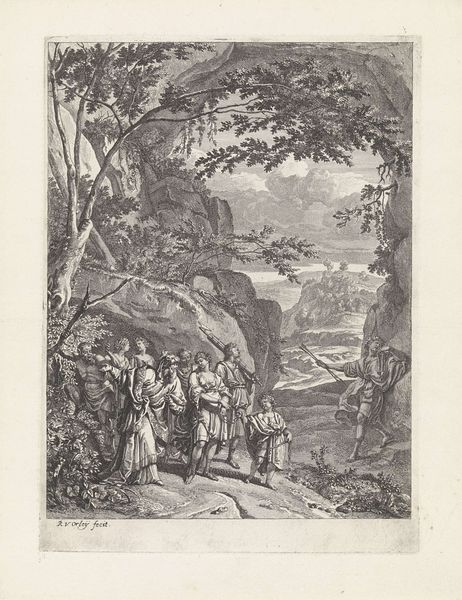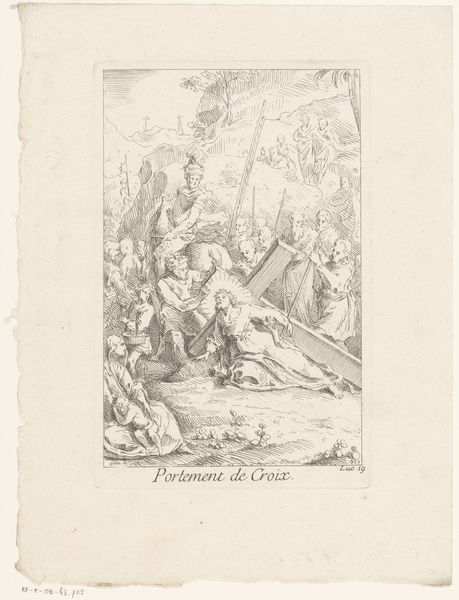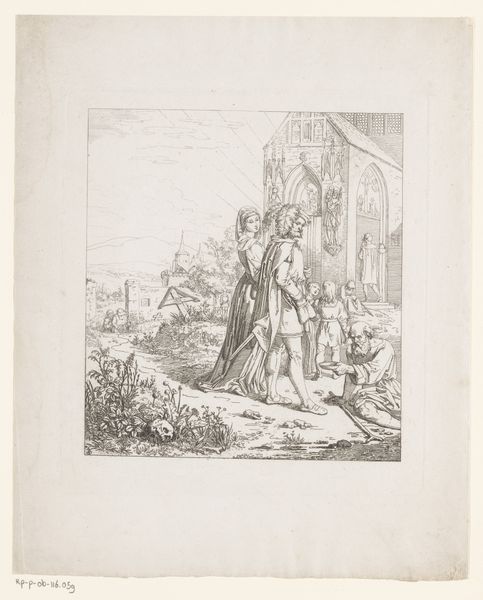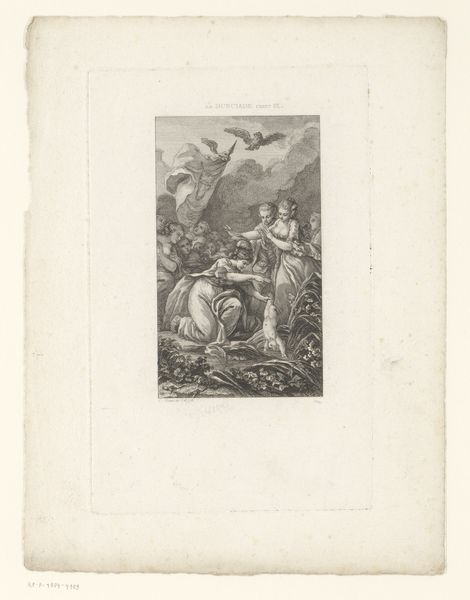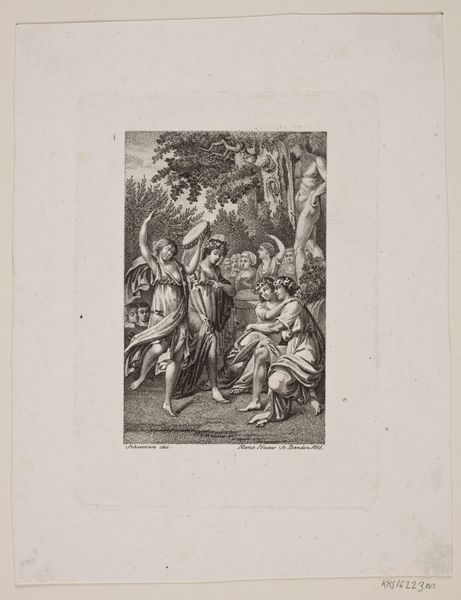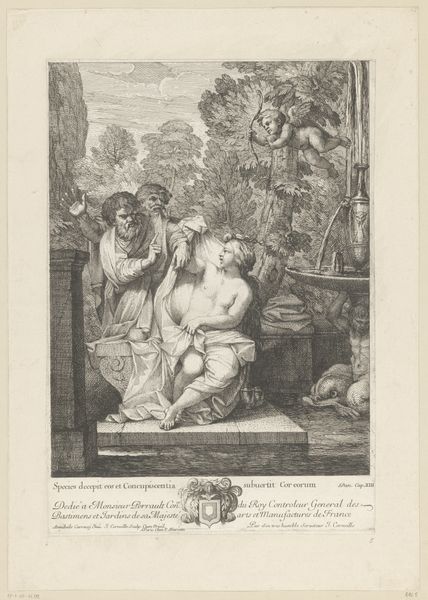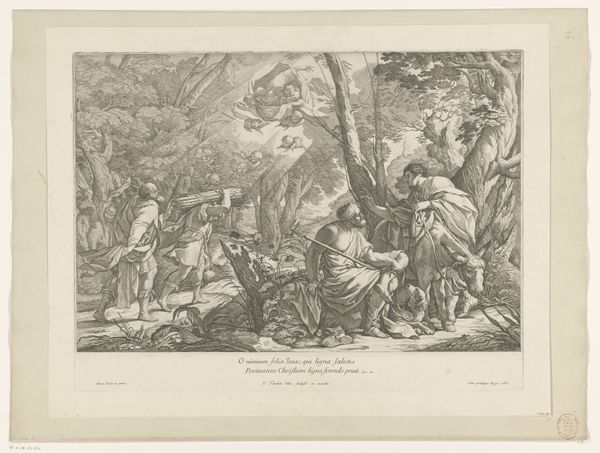
print, etching, engraving
#
narrative-art
#
baroque
# print
#
etching
#
old engraving style
#
etching
#
history-painting
#
engraving
Dimensions: height 191 mm, width 127 mm
Copyright: Rijks Museum: Open Domain
Curator: Immediately striking is the almost ethereal quality achieved by these fine lines. There's a hushed anticipation, a feeling of momentous exchange. Editor: That's a beautiful reading. The piece is an engraving, etched by Gabriel Huquier before 1732. The title is "Johannes de Doper stuurt zijn discipelen naar Christus," John the Baptist Sending His Disciples to Christ. It resides here in the Rijksmuseum. Curator: The halo surrounding Christ—that's the key focal point, isn't it? It signifies not just divinity but also the future. It feels like Huquier knew how powerfully light could operate psychologically. Editor: Absolutely. It's worth remembering that these prints circulated widely, carrying significant weight. Images such as these became the way religious and historical narratives took root in the public's imagination. Consider the baroque style and its use of drama to impress an emotional message upon viewers. Curator: Look how John’s disciples are posed, almost in a receiving line of sorts, each unique yet united. Their postures speak to this moment of handover—almost a reluctant departure for them, yet hopeful and curious. The symbolic passing of the torch, so to speak. Editor: Yes, and it illustrates a specific socio-political dynamic— the influence of religious institutions over daily life. Images helped establish and then reiterate the desired message to all levels of society. They made religious dogma accessible to all in an era when widespread literacy was still absent. Curator: Even the trees in the background feel significant—they point towards both groups, like earthly witnesses. Everything directs our gaze toward the core transfer, which makes the halos surrounding both main figures that much more potent. Editor: Indeed. And understanding how those images worked – that's a vital role we take on as viewers, even today. Thinking critically about their legacy lets us shape their modern significance, ensuring visual messages empower rather than prescribe. Curator: I appreciate seeing the echoes of humanity preserved. It always resonates when viewing works like this. Editor: It’s an important reflection to make, highlighting the visual threads which stretch between then and now.
Comments
No comments
Be the first to comment and join the conversation on the ultimate creative platform.
